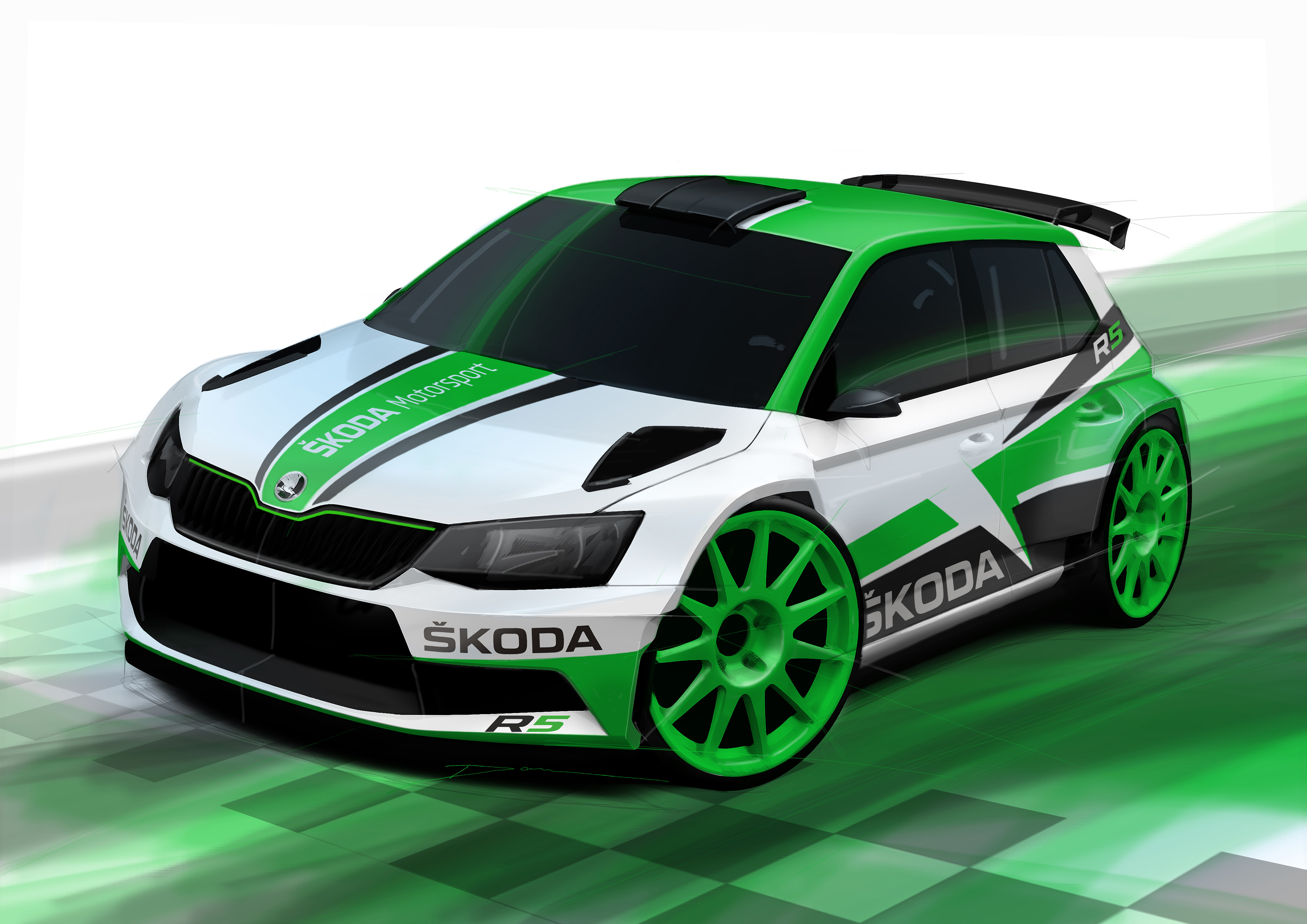A characteristic feature
One of the design features the third-generation FABIA was endowed with was the “wing line” beneath the “tornado line” – the sharp side ridge that is so characteristic of ŠKODA cars today. “This is a feature that helps optically lower the car’s height, creating the impression that the car is more squat. The tornado line has been retained in the model’s latest generation as well, of course. This design feature is used in various forms on newer models as well.
 Sketch of the third-generation ŠKODA FABIA by Petr Matušinec
Sketch of the third-generation ŠKODA FABIA by Petr Matušinec
One feature of the third-generation FABIA was also a continuation of the second generation: this was the option of enhancing the car’s looks with a contrasting paint job for the A pillar and roof. After its world premiere, the car was unveiled in the Czech carmaker’s home country with this design. When ŠKODA presented its new FABIA at the Designblok event, the campaign’s slogan was “Tested on Real People”. The silver FABIA with red wheels and a red roof and A pillars was one of the most head-turning exhibits at the Czech design festival.
 Sketch of the sports version, the ŠKODA FABIA MONTE CARLO
Sketch of the sports version, the ŠKODA FABIA MONTE CARLO
At that time the FABIA start to push a more youthful image. Ferdinand Piëch, chairman of the supervisory board of Volkswagen AG, said at the time that the FABIA COMBI was the best-looking car of the entire Volkswagen Group. The sports versions of the FABIA enhanced the car’s youthful image. The FABIA MONTE CARLO models were designed for road use, while the FABIA R5, followed up by the Rally 2 evo, are still winning rally events to this day. “The third-generation FABIA’s design was kind of more muscular, which was most evident in the R5 racing version,” says Matušinec. And he adds: “But if you take a close look at the FABIA R5, you see that the modifications that are important for the sporting version are actually a natural evolution of the mass-produced version’s features.”
Petr Matušinec won’t hear a bad word about the third-generation FABIA. That’s partly because the car’s development was a very emotional process for him. “I call it my second child, because my first son was born when it was being developed. So I had no shortage of intense experiences both at home and at work,” says Matušinec, for whom the third-generation FABIA was the first complete mass-produced car he helped design.
 Sketch of the FABIA R5, or Rally 2 evo, version of the third-generation ŠKODA FABIA
Sketch of the FABIA R5, or Rally 2 evo, version of the third-generation ŠKODA FABIA
That does not stop him from casting a critical eye over “his” work, though. “Of course, there are a few details I would change from today’s perspective. Most impartial observers wouldn’t even notice what I’m talking about, but at the time I wanted to make the A pillar around 3 millimetres more convex, but there was no time because the project was already at too advanced a stage,” he says.
 Sketch of the third-generation ŠKODA FABIA COMBI
Sketch of the third-generation ŠKODA FABIA COMBI
Even so, he still thinks it’s a timeless car. He likes the blue paint job best, the one ŠKODA chose for presenting the car. “All the shades look good when combined with a black roof and nice wheel rims. And even today when I see the MONTE CARLO version, it makes me truly happy to see that the FABIA still looks very good. Including the COMBI version,” Matušinec concludes. Incidentally, an combi version is planned for the fourth-generation FABIA as well, but it won’t go into production for some time yet.

